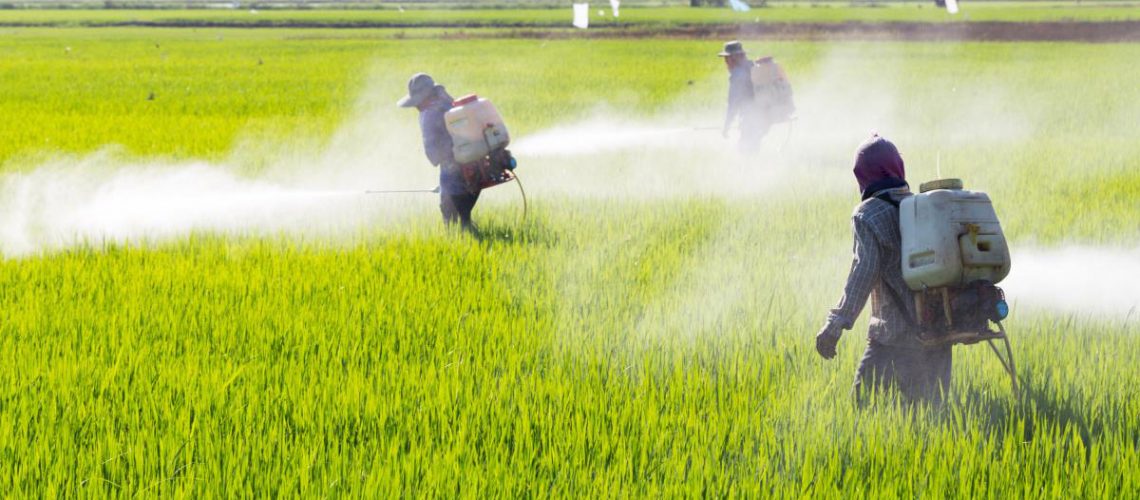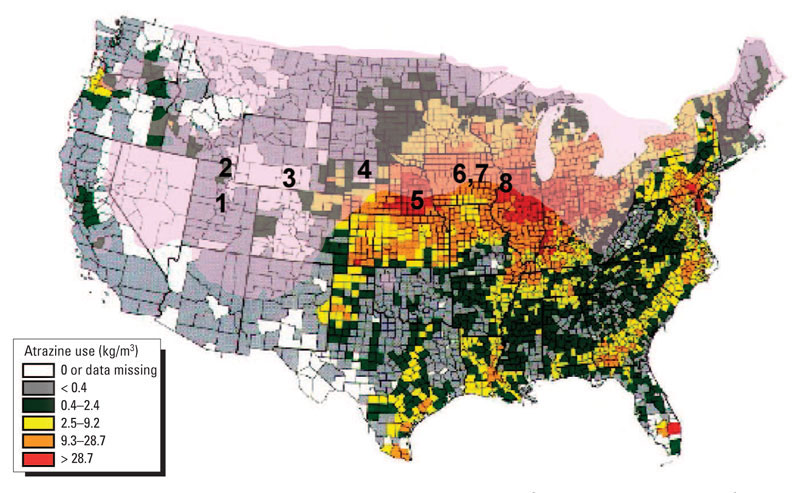
How to remove atrazine from tap water
- November 30, 2018
- , 6:55 pm
More and more people are concerned about herbicides or more specifically how to remove atrazine from tap water. And the concern is real.
In the past year the second-most sprayed weed killer in the U.S., atrazine was detected in 27 states at 1361 different water utilities, affecting 29 million people.
In many cases the amounts were well above EPAs limit. But even if they were not it’s still a health risk.
In this article we will dwell deeper into the health risks of atrazine, how to know if you have it in your tap water and how to remove it. Or you can just skip to the summary at the end.
How dangerous / unhealthy is atrazine in tap water?
Atrazine has been banned in Europe since the 1980s under laws that prohibit the use of any pesticide that contaminates drinking water. But in U.S., the federal government places few restrictions on its use.
Recent studies of American communities with atrazine-contaminated water associate exposure with increased cancer risk, shorter pregnancy and altered menstrual cycles. These studies examine people drinking water with atrazine concentrations well below the EPA federal legal limit of 3 parts per billion, or ppb.
And if it’s bad for adults it’s usually even worse for infants. So there are good reasons to avoid it.
EWG (The Environmental Working Group) also highlights atrazine as a major threat and have been fighting to get it banned in the US.
Read more about this on by the pesticide action network.
Here’s a map of where Atrazine is mainly used.
Is bottled water safe from atrazine?
No. Almost half of all bottled water comes from filtered tap water and depending on the filtering this might not be free of atrazine and other herbicides. Spring water could also be contaminated depending on the source. If it’s near areas of farmed land then it’s very likely that there is herbicides in the spring water as well.
How do I know if there’s atrazine in my tap water?
There are at least 2 ways to find out if there’s atrazine in your tap water at home:
1. Check the local water suppliers latest water report
2. Send a sample of your local tap water to a certified lab for testing.
We suggest starting with (1) since it won’t cost anything. Read more about how to get the local water report.
The other alternative is to find a local certified lab and send a sample for testing.
How do I remove atrazine from tap water?
Here’s the positive news. An affordable high quality activated carbon / carbon block filter will remove atrazine and other herbicides almost completely.
These filters come in several different models
- Filtere Carafes/pitchers
- Faucet filters
- Under the sink filters
- Whole house filters
If you want something simple, affordable and convenient that doesn’t require a plumber then a faucet filter is usually the best solution. There are several brands of these certified for herbicide and atrazine removal with TAPP 2 being one of the top rated.
See more information about what TAPP 2 activated carbon removes.
Summary
In summary this is what you need to know:
- Atrazine and other herbicides is a real concern for tap water in many places
- There are severe health risks with drinking tap water with atrazine even if it’s below the federal limit
- To find out if your tap water contains atrazine check the local tap water report or send a tap water sample to a certified lab to test it
- Atrazine can be removed from tap water with an affordable high quality carbon block filter such as TAPP 2
Have questions or comments about this topic? Please comment below or contact us.
|
|
Share this post








